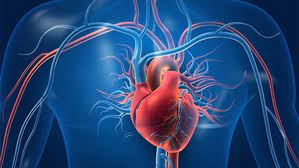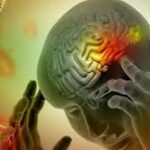STANFORD, CA – Scientists have identified a specific gene that plays a crucial role in determining the anatomical pattern of major arteries supplying blood to the back of the human heart, a discovery that could unlock future therapies for heart disease by enabling the growth of new blood vessels.
The study, led by researchers at Stanford University and published in the journal Cell, pinpoints the gene CXCL12 as central to the formation of the posterior descending artery. This artery is vital for delivering oxygenated blood to the heart’s rear muscle tissue.
Most humans (around 80%) exhibit a “right-dominant” pattern, where this artery branches off the main coronary artery on the right side of the heart. However, in roughly 10% of people, it originates from the left main artery (“left-dominant”), and in another 10%, arteries branch from both sides (“co-dominant”).
“For the first time, we have evidence of a gene that regulates the development of one of the most important types of arteries in the human body,” stated Kristy Red-Horse, co-senior author of the study and a professor of biology at Stanford. She added, “And if we know the development pathways of these important arteries, then we can perhaps regrow them by reintroducing these pathways in a diseased heart.”
The research team, including co-senior author Dr. Tim Assimes, an associate professor of cardiovascular medicine at Stanford and clinician at the Palo Alto VA Medical Center, leveraged the extensive health and genetic data from the Department of Veterans Affairs’ Million Veteran Program. Analyzing angiograms and genetic samples from over 60,000 veterans, they identified ten locations in the human genome linked to the posterior descending artery’s branching pattern. The strongest signal originated near the CXCL12 gene.
Significantly, previous research by Red-Horse’s lab had shown that administering the protein produced by CXCL12 spurred the growth of new arterial branches in damaged mouse hearts. The current findings in humans solidify the gene’s critical role in human artery development.
“We now have evidence that this patterning of our two major coronary arteries is controlled by differences in our DNA code we inherit from our parents, and the top signal is near a gene that is also responsible for the growth and development of coronary arteries,” Dr. Assimes explained.
Further investigations involving imaging of fetal hearts confirmed that CXCL12 was active precisely when the artery’s directional dominance is established early in development. Experiments in mice also demonstrated that reducing the protein associated with CXCL12 led to the development of left-dominant or co-dominant patterns.
While it remains unknown whether possessing the common right-dominant pattern offers advantages or disadvantages concerning heart disease risk, the identification of CXCL12 opens exciting possibilities. Researchers envision a future of “medical revascularization,” where therapeutic interventions could stimulate the growth of new collateral arteries. This could provide alternative pathways for blood flow when existing arteries become blocked, potentially offering a non-invasive biological solution instead of current mechanical treatments like bypass surgery or stent placements.
The Stanford team plans to further investigate the specific DNA variations affecting CXCL12 expression and explore how this knowledge can be translated into targeted therapies for regenerating heart arteries.
(More information: Pamela E. Rios Coronado et al, CXCL12 drives natural variation in coronary artery anatomy across diverse populations, Cell (2025). DOI: 10.1016/j.cell.2025.02.005)
Disclaimer: This news article is based on recent scientific research findings. The information presented is for general informational purposes only and does not constitute medical advice. Potential future therapies discussed are still in the research phase and are not currently available. Consult with a qualified healthcare professional for any health concerns or before making any decisions related to your health or treatment.












